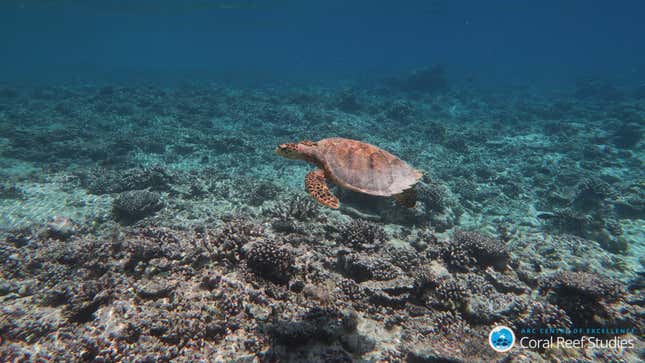
You’ve heard it before: Climate change is killing coral reefs. I’m sorry to say this sad fact remains true and just got some additional confirmation.
A new analysis, which appears Thursday in the journal Science, looked at how 100 coral reefs have been faring as temperatures have risen over the last 35 years. And the prognosis ain’t good.
Since 1980, the frequently of coral bleaching events—when heat stress causes corals to expel their symbiotic algae, which in turn causes them to starve—has quintupled. Regional-scale bleaching and mortality events spanning more than 1000 km (600 miles), which were “exceedingly rare or absent” prior to 1980, are now happening on the regular.
Worst of all, as more heat stress events fuel more frequent and bigger coral bleaching episodes, fewer and fewer reefs remain unscathed. Only six of the 100 reefs examined in the study—five in Australia and one in South Africa —have yet to experience severe bleaching. Some of these reefs are far enough south that waters circulating from the Southern Ocean help keep them cool, while others are likely protected by local current patterns.
Regardless, study co-author Mark Eakin, coordinator of NOAA’s Coral Reef Watch program, says he expects all of the reefs to experience bleaching eventually.
“This is a global problem,” Eakin told Earther. “No coral reef on Earth is safe from the effects of climate change.”
Although there’s been a lot written on the plight of coral reefs recently—after all, these underwater jungles withered in a global bleaching event that lasted from 2014 to 2017 that killed large sections of the Great Barrier Reef—long-term bleaching records are surprisingly hard to come by.
“[The records have] been pretty abysmal,” Eakin said, noting that most prior efforts to pull together data on coral bleaching had been volunteer-based, which has led to inconsistency. Volunteer observations come when they come, and when they don’t come, that doesn’t mean there wasn’t a bleaching event.
To building a more complete picture of how coral bleaching has changed in recent history, the new study pulled data from sites in the western Atlantic, Australasia, and the Indian and Pacific Oceans where long-term, standardized records were available.
“This is the first database where you can comprehensively say over the last 35 years where there was and was not coral bleaching,” Eakin said.
The results don’t just confirm the dramatic rise in the frequency of bleaching events from once every 25-30 years on average to once every six. Eakin said they also show that bleaching events line up with an increase in the severity and duration of oceanic heat waves, as measured by satellites. Additionally, the relationship between heat stress and bleaching we’re seeing matches up with model expectations.
“[Our models] say that by mid-century, somewhere around 90 percent of coral reefs are going to get hit by bleaching annually or near-annually,” he said. “The trend in the data is saying the same thing.”
Bleaching doesn’t necessarily kill corals. If water temperatures cool off quickly enough, their algal partners will return, and corals will often recover. Some species are more resilient to heat stress than others, and as ocean temperatures continue to rise, some scientists think these climate-hardy corals will become more abundant.
There’s also hope in the form of a wide variety of reef-saving interventions coral biologists are tooling around with, from assisted reproduction to genetic engineering to pumping cold water onto reefs.
But ultimately, these are Hail Mary solutions intended to prevent coral from going extinct, not safeguard the biodiversity of today’s reefs. At best, biologists expect reefs of the future will be a shadow of what they were if we keep on our current warming trajectory.
“Everything is dependent on making sure we do limit the extent of climate warming,” Eakin said. “If we don’t do that, the rest of it doesn’t matter.”

